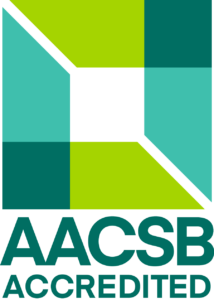Public relations (in English)
- Credits: 4
- Ending: Examination
- Range: 2C
- Semester: summer
- Year: 2
- Faculty of Commerce
Teachers
Included in study programs
Teaching results
By completing the course, students gain a wide knowledge about the essence of public relations, as one of the effective and strategic tools of reputational management. They will get acquainted with the most important tools of public relations, gain knowledge about the planning and process of PR communication, including its evaluation. They will also become familiar with the both basic parts of PR - internal and external communication. As part of external communication, they will acquire overview of the most important media relations tools and techniques. They will also gain knowledge about the principles and characteristics of crisis communication, as well as communication in terms of public affairs and lobbying. They will learn about the work of PR professionals in various positions. They will gain knowledge of PR communication tools in the online space, with an emphasis on the specifics of new media and communication channels – blogs, podcasts, social networks.
Graduates of the course will be able to analyze, plan, conduct and evaluate effective strategic PR communication. They will understand the specifics of different forms of PR communication, their possibilities and risks. They can write brief for an external PR agency. They are also able to communicate fully and effectively either with the management in their organisation, or with the media. In case of crisis communication, they perceive not only its threats, but also its opportunities. They understand new trends in PR, have the competence to communicate and benefit from new media in the online space.
Upon successful completion of the course students will acquire competences that will enable them to apply in various positions in the field of internal and external communication in all types of companies, both on the client´s site and in the agencies. They can solve problems of strategic and operational nature. They will acquire professional flexibility and acquire a systematic, innovative and proactive approach to various business and communication situations, their evaluation and solution. They will be ready to work in junior positions in communication and PR departments on the part of clients as well as specialised PR and communication agencies.
Indicative content
Indroduction to public relations. PR in the past. Place PR in the marketing and communication mix. Public relations tools and their use. Communication process in PR. Internal communication and its characteristics. Media relations in the context of the work of both a journalist and a PR communicator. Principles of effective communication and working with the media. Principles of effective crisis communication. The spokesperson, roles and responsibilities. Job of PR manager. Public affairs. Lobbying. Online PR. Specifics and tools of online communication. New media. Web sites. Blogs. Social networks. Podcasts. Place of PR in the business organization. Work in PR – inhouse PR department, outsourcing. Evaluation of PR process.
Support literature
1. Bowen, S. A.; Martin, T. R.; Rawlins, B.. 2019. An Overview of the Public Relations Function. Hampton: Business Expert Press.
2. Erdemir, A. 2018. Reputation Management Techniques in Public Relations. Hershey: IGI Global.
3. Thurlow, A.. 2019. Social media, organizational identity and public relations: the challenge of authenticity. Routledge.
Syllabus
1. Introduction to the issue. History of PR. Definitions. 2. PR in marketing communication. Public relations tools. Reputation management. 3. Planning process in PR. Preparing for PR communication. PR process in the organization. Case studies. 4. Internal communication. The place and the role of internal communication in the company´s communication. Principles of internal communication. Internal communication tools. Case studies. 5. Media relations. Place and role of media relations in PR communication. Media relations tools. Case studies. 6. Principles of effective communication with the media. Agenda setting. Writing, preparation of effective texts. Case studies. 7. Crisis communication. Definition of the crisis. Principles of effective crisis communication. Case studies. 8. Spokesperson – role, responsibilities. PR manager. Crisis manager. Case studies. 9. Public affairs. Lobbying. Public opinion. Case studies. 10. Online PR. Specifics of online PR communication. Content marketing. Native advertising. Case studies. 11. New communication channels and new media in PR process – web, blogs, podcasts, social networks. New vs. traditional media. Case studies. 12. The place of PR in the organizational structure of the company. Outsourcing of PR activities. The work of the PR agency. Case studies. 13. Evaluation of PR communication process. Effective PR campaign. Creativity in PR. Case studies.
Requirements to complete the course
20% - continuous semester assessment
20% - semester paper
60% - written examination
Student workload
Workload: 104 hours
Attendance at lectures: 0 hours
Attendance at seminars: 26 hours
Preparation for seminars: 13 hours
Elaboration of a semester project: 35 hours
Preparation for the exam: 30 hours
Language whose command is required to complete the course
English
Date of approval: 06.03.2024
Date of the latest change: 17.10.2023

